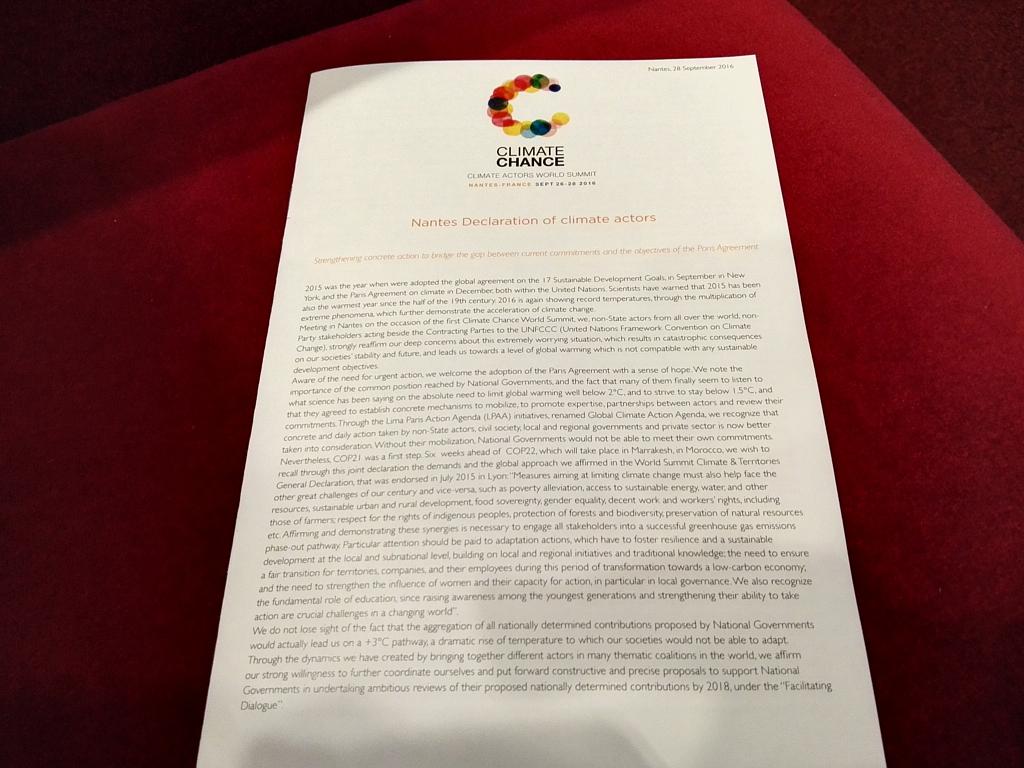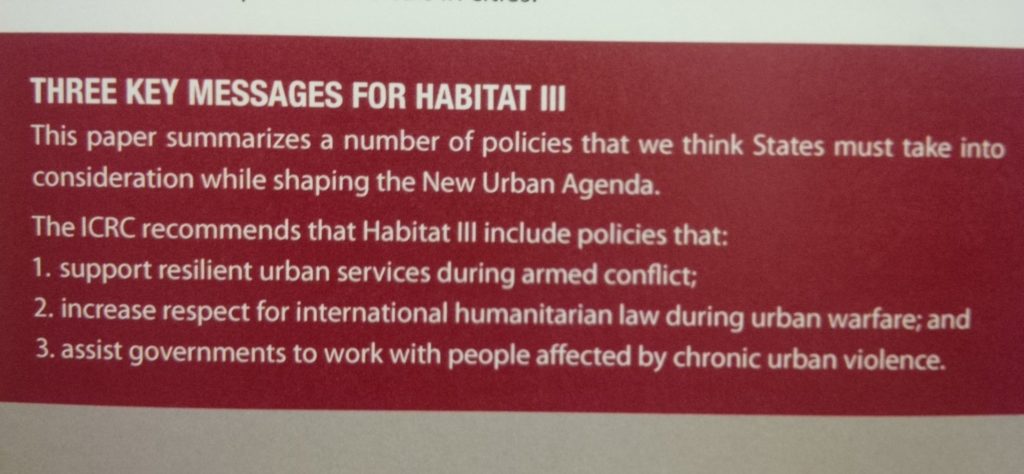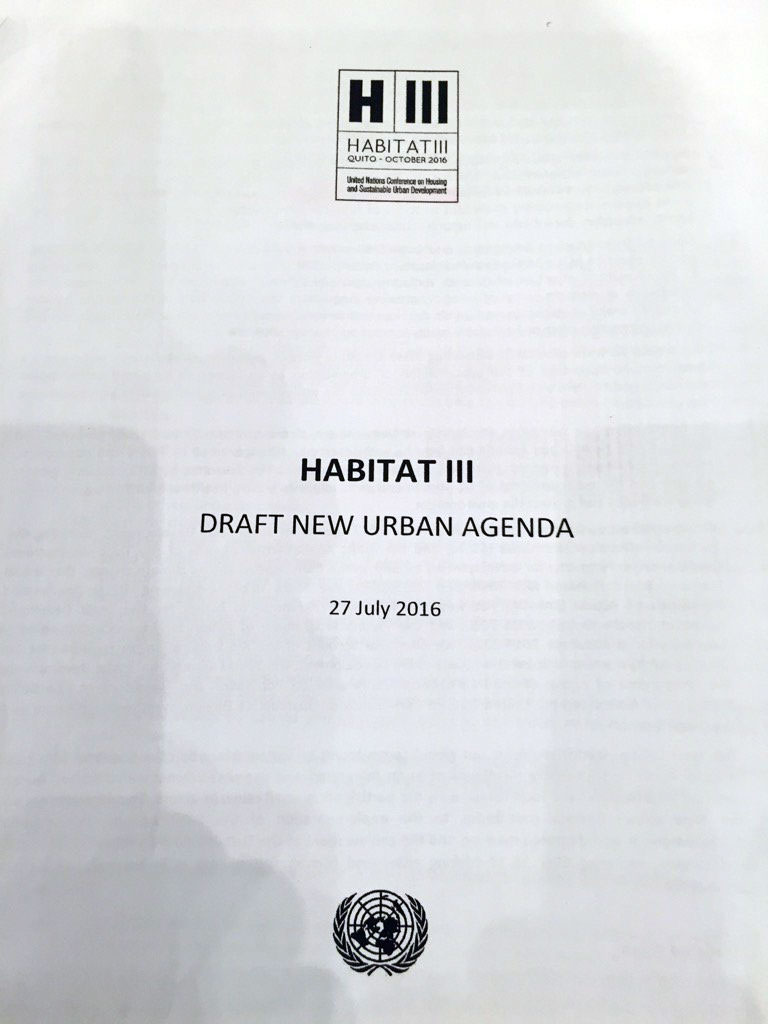[Below posted 2/7 1.15 (Part3) pm and 26/7 11.27 am (Part4)]
Dear Enablers of the Zero Draft version 3,
Main Topic A: The Transformative Commitments for Sustainable Urban Development / Part 3 and 4
– Sub-topic 1. Sustainable & Inclusive Urban Prosperity & Opportunities for All >
In preparation for the UN Habitat III Conference, the Prepcom3 as one very important Conference, with 4248 participants representing 142 countries governments, professional, non-profit, and civic organizations, and many side events.
Voices heard at the H3PrepCom Conference: “In an urbanizing world, armed conflict & violence are urbanizing too.”, “Conflict is increasingly fought in urban areas” New Urban Agenda needs to address this”, “Conflict & violence urbanising: NUA needs to support intl hum law, resilient urban servs, victims of chronic violence”,“Government block funds for military prep for climate change because – hey -who cares what’s going on in Arctic?”
“By the year 2050, the world urban population is expected to nearly double, posing massive sustainability challenges in terms of housing, infrastructure, basic services, and jobs among others.” Is the “Transit City” the new norm in our new urban paradigm?
We need to address how existing armed forces and military reserves can become a stakeholder and joint partnership with the civil society and local authorities “New Urban Agenda” in the way cities and human settlements are planned, developed, governed and managed. E.g. collaborative action such as inter-municipal cooperation, including the establishment of practitioners’ capacity networks or transformative commitments via shared use for military spaces into public places etc.
What is the military’s role in the New Urban Agenda #NUA?
Military readiness can compliment planning strategy, and collaboration comply with International Humanitarian Law #IHL
Remarks
Military force for urban action will strengthen cooperation between sub-national and local governments and civil society as well as their existing networks to deliver on capacity development programmes by means of peer-to-peer learning, subject-matter related partnerships, and collaborative action such as inter-municipal cooperation, including the establishment of practitioners’ networks and other science-policy interface mechanisms.
Military force for urban action will support institutionalized mechanisms for sharing and exchanging information, knowledge and expertise, including the collection, analysis and dissemination of geographically-based, community-collected and disaggregated data by income, gender, age, race, ethnicity, migratory status, disability, geographic location and other characteristics relevant in national and local contexts, as well as ensuring a robust science-policy interface in urban policy formulation.
I think the New Urban Agenda #NUA would benefit from military precision, military indicators and military efficiency for real urban transformation in the post-2015 future.
The military’s new role can charge mobility, rural transportation and transport between cities?
Is the military’s new responsibility to leading and carrying the new urban movement?
It’s likely a necessity the military protect our green belts by controlling territorial expansion.
Soldiers can be deployed as urban men committed to prepare our cities for new challenges.
Protection, there’s already a great need to protect 10 000 “smart cities”, this is a huge responsibility.
Army reservists are with training ready to serve, first alongside the regular army.
Army personnel have collectively and individually technical capacities that can be used in favour of civil society – for example, during or after natural disasters.
What will the military’s role look like in the Habitat III agreement?
Background
The Zero Draft for the New Urban Agenda seems to be well connected and embraced by the global community, yet is the balance there? One word missing in the draft is military.
For a holistic approach point of view, we need to discuss how urban sustainable development and the military force can collaborate for a modern safe peaceful future and further secure and safeguard the New Urban Agenda.
In our achieving to accomplish tasks and system governance our cities new important networks and partnerships being formed. In collaboration these can create urban miracle development over nation borders. Cities may also need to take bold military decisions on how interaction can create and generate new civil/military urban tasks and functions. Within the goal11 to downsize the military sector and divert it into maintenance and support areas for sustainable urban development. City leaders and planners are via its position as responsible as any to “demilitarization” and submit Urban Solutions as best the city we need practice towards the world we want..
For the Prepcom3 regional event in Surabaya, Climate Change Centre Reading will continue its engagement in the UN Habitat III global campaign and second World Assembly, by awaiting granting special accreditation status for holding a side event, in time to present conclusions and contributions to the Habitat III conference.
One topic for the Zero Draft is the role and the future of military urban support action in relation to urban sustainable development for the New Urban Agenda (NUA).
Issues to address:
Military for urban action commit to strengthen synergies between international migration and development, at the global, regional, national, sub-national, and local levels. We further commit to support refugees, internally displaced persons and migrants, regardless of migration status, as well as their host communities, taking into account national circumstances, ensuring full respect for human rights and recognizing that, although the movement of large populations into towns and cities poses a variety of challenges, it also brings significant social, economic, and cultural contributions to urban life.
Military for urban action to support the working poor in the informal economy as contributors and legitimate actors of the urban economies, including the unpaid and domestic workers. A gradual approach to formalisation will be developed to preserve and enhance informal livelihoods while extending access to legal and social protections, as well as support services to the informal workforce.
Military for urban action to facilitate and support urban development in a manner that preserves rapidly diminishing natural resources, protects and improves the urban ecosystem and environmental services, promotes disaster risk reduction, while promoting sustainable economic development and people’s well-being, through environmentally sound planning, infrastructure and basic services, enhancing the quality of life of the inhabitants.
Military for urban action to promote and support the creation of well-connected and well-distributed networks of open, multipurpose, safe and green public spaces, including the creation of ecological corridors, to improve the resilience of cities to disasters and climate change, reducing flood risks and heat waves, and improving food security and nutrition, physical and mental health, household and ambient air quality, and attractive and liveable urban landscapes.
Military for urban action commit to strengthen resilience of cities and human settlements, including through the development of quality of their infrastructure by adopting and implementing integrated, age and gender-responsive policies and plans in line with the Sendai Framework for Disaster Risk Reduction 2015-2030,mainstreaming holistic and data-informed disaster risk reduction and management at all levels, reducing vulnerabilities and risk, especially in risk-prone areas of formal and informal settlements, including slums, enabling households, communities, institutions and services to prepare for, respond to, adapt to, and rapidly recover from the effects of hazards, including shocks or latent stresses. We will promote the development of infrastructure that is resilient and which will reduce the impact of disasters especially in slums and informal settlements.
Military for urban action to shift from reactive to more proactive risk-based, all-hazards and all-of-society approaches, while also ensuring timely and effective local disaster response to address the immediate needs of inhabitants following a disaster, as well as supporting the integration of the ‘’Build Back Better’’ principles in the post-disaster recovery process to integrate the lessons from past disasters into future planning and resilience-building measures.
Military for urban action commit to promote national, sub-national, and local climate action, including climate change adaptation and mitigation, and to support cities and human settlements, their inhabitants and all local stakeholders as key implementers. We further commit to support the shift to a low-greenhouse gas emissions energy and transport systems in urban areas, consistent with the objectives of the Paris Agreement under the United Nations Framework Convention on Climate Change, including holding the increase in the global average temperature to well below 2 degrees Celsius above pre-industrial levels and pursuing efforts to limit the temperature increase to 1.5 degrees Celsius above pre-industrial levels.
Military for urban action invite international and regional organizations, including the United Nations development system, development partners and the private sector to enhance coordination of their urban development strategies and programed to apply an integrated approach to sustainable urban development, mainstreaming the implementation of the New Urban Agenda.
Military for urban action will integrate disaster risk reduction, and climate change adaptation and mitigation considerations and measures into age and gender responsive urban and territorial development and planning processes, including low-carbon, resilience-based, and climate effective design of spaces, buildings, and constructions, services and infrastructure, promote cooperation and coordination across sectors as well as build capacity of local authorities to develop and implement risk assessments on the location of current and future public facilities, and formulate adequate evacuation procedures.
Military for urban action will encourage and support applying the principle of subsidiarity in the implementation of national housing policies through sub-national and decentralized structures in order to ensure the coherence between national and local urban development strategies, land policies, and housing supply.
Military for urban action will support the development of vertical and horizontal models of distribution of financial resources to decrease inequalities across territories, within urban centers, and between urban and rural areas, as well as to promote integrated and balanced territorial development. In this regard, we emphasize the importance of improving transparency of data on spending and resource allocation as a tool to assess progress towards equity and spatial integration.
Military for urban action will support access to different multilateral funds, including the Green Climate Fund, for cities to secure resources for climate change adaptation and mitigation plans, policies, programmes and actions. We will collaborate with local financial institutions to develop climate finance infrastructure solutions and to create appropriate mechanisms to identify catalytic financial instruments. We will collaborate with national and international insurance and reinsurance institutions to develop feasible solutions for future climate risks in cities, with regard to investments in urban infrastructures, urban assets as well as for local populations to secure their shelter and economic needs.
Military for urban action will support local government associations as promoters and providers of capacity development, recognizing and strengthening, as appropriate, both their involvement in national consultations on urban policies and development priorities, and their cooperation with sub-national and local governments, along with civil society, private sector, professionals, academia and research institutions and their existing networks, to deliver on capacity development programmes by means of peer-to-peer learning, subject-matter related partnerships, and collaborative actions such as inter-municipal cooperation, on a global, regional, national, sub-national, and local scale, including the establishment of practitioners’ networks and science-policy interface practices.
Military for urban action will support science, research, and innovation, including a focus on social, technological, digital and nature-based innovation, robust science-policy interfaces in urban and territorial planning and policy formulation, as well as institutionalized mechanisms for sharing and exchanging information, knowledge and expertise, including the collection, analysis, and dissemination of geographically-based, community-collected, high-quality timely and reliable data, disaggregated by income, sex, age, race, ethnicity, migration status, disability, geographic location, and other characteristics relevant in national, sub-national, and local contexts.
Military for urban will continue strengthening mobilization efforts through partnerships, advocacy, and awareness activities on the implementation of the New Urban Agenda using existing initiatives such as World Habitat Day and World Cities Day, as well as considering establishing new initiatives to mobilize and generate support from civil society, citizens, and stakeholders. We recognize the importance of continuing to engage in the follow-up and review of the New Urban Agenda with sub-national and local governments associations represented at the World Assembly of Local and Regional Governments.
Military for urban action will foster and support the creation, promotion, and enhancement of open and participatory data platforms using technological and social tools available to transfer and share knowledge among national, sub-national, and local governments and other stakeholders, including non-state actors and people to enhance effective urban planning and management, efficiency, and transparency through e-governance, ICT-assisted approaches.
The list can go on…
Who will form / shape the New Urban Agenda, which parties can be trusted?
Growing mismatch when not all stake holders are present to offer sufficient inclusiveness in the NUA negotiations. Apart from the stereo typical urban societies as planners, architects, engineers, and scientists, we need them all, as well as an experienced urban demilitarized task force. Transformed with transferable civil skills, medical, mechanical, outdoor, HR, finance, intelligence, IT & comms, management, partnership/teamwork, logistics & support and musical, ceremonial. Committed to problem solving.
Local government – Quick cultural background
If we go back in time and compare with an interesting time in society development and who was the clergy let’s say 400 years ago?
The four social classes;
- Chivalry and nobility, The stalls, the composition and activities first organized, was the Nobility. It maintained the obligation of every noble to appear before the national day, the obligation of the nobility periodically managed to get replaced by sending representatives, but in the deliberations and decisions of the Nobility would only be one of each family selected principal to participate. Aristocracy guaranteed a predominant influence through voting by classes, and the President, the so-called rural marshal, the king would appoint. Who is the King today?
- Clergy, The Parliament stipulated that the first archbishop at the opening of Parliament would bring the word to all the noble estates, and he became the natural president of the clergy.
The first general legislation on the untitled estates composition was given of Government : the clergy would be under this form of bishops and superintendents , two representatives of each dioesan and one for the clergy “of each two counties.” What is the faith today?
- Burghers, Burghers would consist of a mayor and a bailie other distinguished citizens from each city.
- The peasantry, The peasantry would be represented by a farmer from each district. No one got to be a member of parliament, who was not a resident.
The point is – all the same today as we have two groups, as above the landowners and then the landless residents, the people. We have had the above landowner groups who influenced all decisions and who have all used the military as an instrument. We have had this concerned groups as landless urban/rural city residents the people. What has changed in 400 years, is it the citizens, or..?
The New Local Government the new urban glue “connective matrix” (the mediators)
How does habitat III ensure BINGOS LGMAS FARMERS RINGOS ENGOS IPOS W&GS YOUNGOS TUNGOS and many more give inclusive sufficient voice and influence (in Togethernessship). Where in the NUA and What is the Urban/Rural role of the military, representing millions of engineers and an army of soldiers? How can a modern military force fill the capacity gap missing in forming an inhabitable globe?
Partners, stakeholders, actors, military etc. all to be inclusive anywhere the global smart (clever) city network. New city structures more resettled populations. The mixed-use trick is how to shuffling population groups between territories to benefit and trigger responders to sustainable develop the ultimate Net-Zero society!
Will Habitat IV have army support for safeguarding urban development or will there be a territorial army multi-function?
A good showcase example is Ecuador where the military has stepped in, not only to protect and rescue but are now a big part of its modernisation of a whole nations infrastructure planning, offering solutions and helping supporting urban reconstruction development upgrading in different environments. Education opportunity at the very spot in Quito!
Many thanks!
CCCRdg.org.uk / HabitatCO2lutions.org
contest manager/umbrella task







